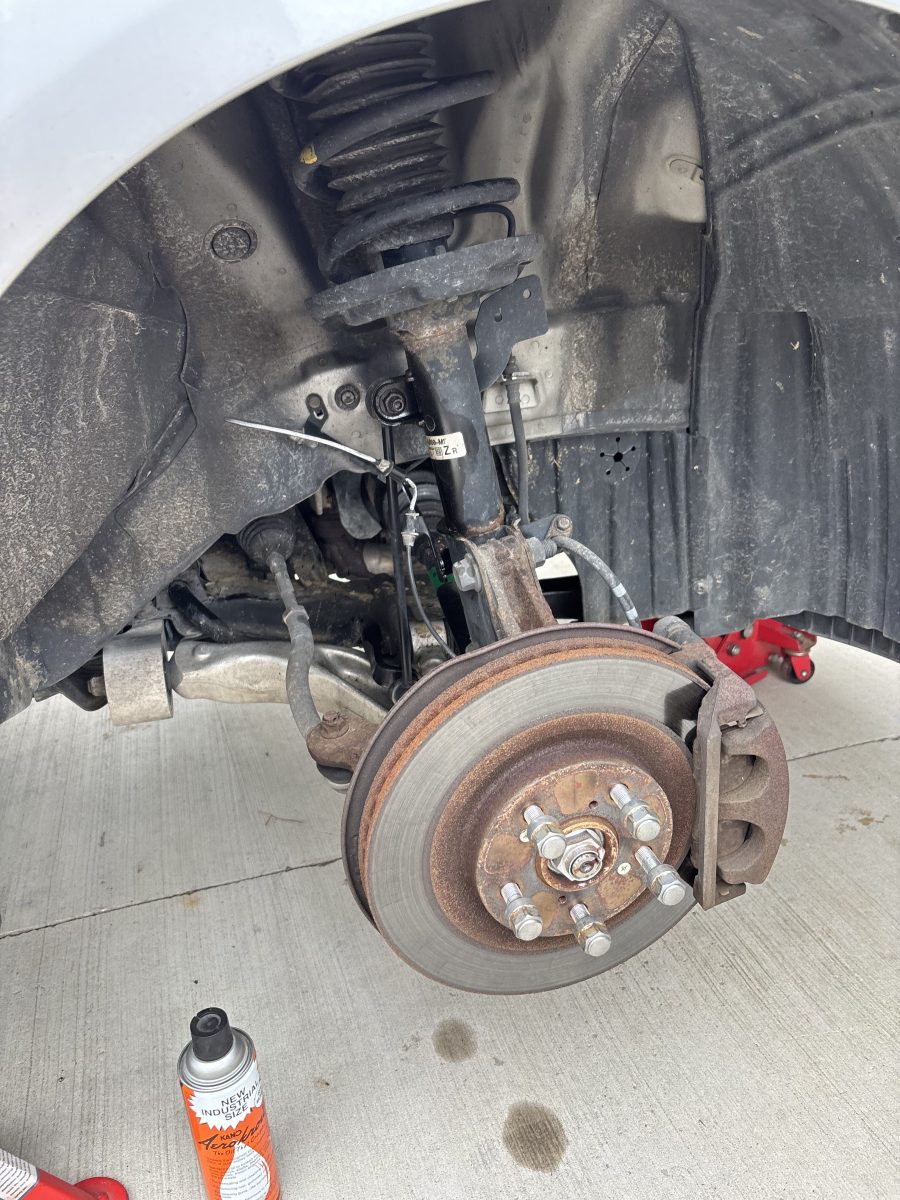
I often write and share personal experiences here. It’s kind of funny—if you had asked me 15 years ago whether I’d be writing regularly, I would have said, “Absolutely not.” That sentiment actually ties in well with today’s message.
Last night, I decided to tackle a maintenance issue on a 2014 Honda Pilot that’d been graciously loaned to us while we saved up for a newer vehicle for my wife. Her van’s transmission failed, and the cost to repair it just didn’t make sense. The Pilot has had a persistent clunking noise whenever it hits a bump. Upon inspection, I found both sway bar links were completely shot—the grease boots were torn, and the sway bar bushings were totally rotted. I had ordered the parts last winter with a few others, and I finally had time in my schedule to take care of them.
If you’ve ever worked on sway bar links, you know they usually don’t come off easily. Still, I kept a positive mindset and tried to remove the nuts holding the links in place—with zero success. So, out came the saw. I was able to cut the driver-side link out, and that’s when I should’ve realized things wouldn’t go smoothly.
My cut on the lower bolt was off and left too much of the stud. So, I grabbed another tool: the angle grinder. I’m not afraid to use the right tool—or to get rough when needed. With the sway bar supported and my hearing protection on, I went to work. It wasn’t a perfect job, but eventually I used a punch and hammer to knock out the remnants and moved on to the top mount. That one backed off halfway, then got cut at the threads and came right out. Thank goodness for sharp saw blades.
With the old link gone, I removed the deteriorated bushing and installed the new one without any trouble. Then came time to install the new sway bar link. These replacements were serviceable with grease fittings—a nice little upgrade for this older vehicle—so I had a good feeling they’d be the last ones it would ever need.
Oddly, the two new links (bought at the same time) came with different styles of lock nuts. One was slightly smashed into an oblong shape. The top nut went on snugly, but just as I was torquing it down, the Allen key recess began to round out. Not a huge deal, since I didn’t anticipate needing to take them apart again.
But the bottom stud and oblong retaining nut didn’t go so well. Halfway on, the nut tightened up severely, and the hex recess rounded out. All I could think was, “It shouldn’t be this hard.” I used the small wrench that came with the new links, and it popped loose—finally. Then I resorted to using vise grips on the flats.



Here’s where I made my mistake: I didn’t slide the grease boot out of the way and kept going. Just as I reached the last thread, the pliers slipped and pinched the brand-new grease boot. I still finished the installation—knowing I’d have to remove it again anyway—and wanted to make sure nothing else was out of alignment. At the time, I felt defeated by a simple task. This really shouldn’t have been so difficult.
In the end, I ordered another new sway bar link. It’s on the way, and I’ll attempt round two in 3–5 business days.
So, what’s the point of this story? Things don’t always go as planned. Sometimes it’s because you miss something or don’t trust your gut when something feels off. Other times, it’s stubborn determination to force something that just isn’t working. You can either dwell on it or take a breath, make a new plan, and keep pushing forward with the same energy.
I’ve seen this play out not just in car repairs, but in travel, my career, and life in general. When something doesn’t go right, it’s okay. Just adjust and move forward. It’s a mindset we bring to our work with customers at EXAIR.
That’s why our 30-day guarantee matters so much. If a recommendation didn’t work out, or testing pointed in one direction, but the results just weren’t there, we’ll help you rework the plan. We’ll back what’s already been done by covering any stock product with our 30-day guarantee and help chart a new path forward.
We’re not perfect, and we never claim to be. My plans don’t always work out either. But a failure doesn’t mean the end—it just means it’s time for a new plan of attack.
Brian Farno, MBA – CCASS Application Engineer

[email protected]
@EXAIR_BF
Big shout-out to my youngest daughter for snapping the photo of the passenger side and spraying down the rusted studs with Aero Kroil while I was at work, and she was enjoying summer break. It definitely pays to have your kids pitch in on these projects.










